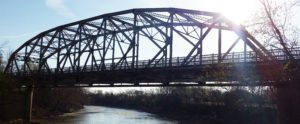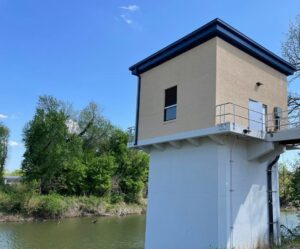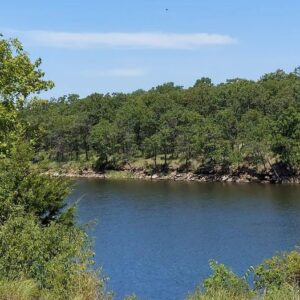

The City of Bartlesville provides water not only to Bartlesville residents but to the entire region, including the cities of Dewey, Ramona and Ochelata, as well as five rural water districts in Washington, Nowata and Osage counties.
This is a huge undertaking, and one that the City of Bartlesville takes very seriously — from the City Council, which must oversee routine items such as water-related agreements and contracts to more unpleasant tasks such as implementing rate increases when needed — to the Water Utilities Department technicians who treat the City’s potable water and monitor it at every point from intake to delivery.
Bartlesville’s water systems have changed greatly over the years, beginning shortly after the city was founded in 1897. At that time, water was utilized from the Caney River, which at that time was the city’s sole water supply. The Bartlesville Water Company constructed a dam on the river, where the present State Highway 123 road crosses it, to impound water and supply the water needs for the growing community. In 1914, the dam was raised by two feet and, finally, in 1937, an additional three feet brought it to its current height.


Water needs during these early years ranged somewhere around 1.2 million gallons of water per day (mgd) — far less than today’s annual average of 4-5 mgd during the winter months and 8-12 mgd during the summer.
Records indicate the City of Bartlesville took over water distribution for the community around 1940, and that it was around that time that local and state officials began working with the U.S. Army Corps of Engineers to build Hulah Lake as a federal water resource project.
In addition to Hulah Lake, the City of Bartlesville commissioned and built Hudson Lake, located northwest of Bartlesville, in Osage County. Hudson Lake was completed in 1949. In 1953, the City secured additional water rights for Hulah Lake, and the remaining rights were secured in 2010.
Construction of Hulah Lake provided a new source of water, but it accomplished much more than this. The lake also provided flood reduction to the Bartlesville community, which was greatly needed at the time. Multiple flooding events in the late 1930s and ’40s proved an urgent need for flood control — a need that was eased with the construction of the new lake as flood reduction benefits from the lake greatly reduced downstream flooding within the Bartlesville community.
Shortly after Hulah Lake was completed, in 1957, Bartlesville signed a water supply storage contract for 15,400 acre-feet, or 9.6 mgd. Smaller water supply storage agreements were also signed in 1970, for 2,200 acre-feet, or 1.4 mgd, and in 1980 for 2,100 acre-feet, or 1.3 mgd.
With Hulah Lake as the primary water source and flood control for downstream communities, the area’s water needs were largely met for several years. That is, until severe drought conditions in 2001-02 prompted the City of Bartlesville to begin seeking alternative/additional water sources.


Multiple studies, including the extensive Corps of Engineers Planning Assistance to States (PAS) study, were conducted to identify the most feasible options, and City leaders sought legislative assistance to obtain affordable water rights to Copan Lake, located north of Bartlesville.
In the end, the City’s existing water sources, Hulah and Hudson lakes and the Caney River — in addition to water rights at Copan Lake (obtained much later) — were identified as the most viable options to sustain the area’s water needs for the next 50 years. But while some temporary water rights were granted in the wake of the drought to help meet immediate needs, the federal government had to intervene on the City’s behalf to provide additional water from Copan Lake at a rate affordable to taxpayers. After 12 years of winding its way through the legislative process, the City was able to purchase water rights (1 mgd) at Copan Lake, which allows the City to access to approximately 1 mgd via the Caney River.
Because the cost to acquire water rights for Copan Lake at the previous rate, in addition to constructing water lines and pump stations needed to pump the water to the City’s water treatment plant, located northwest of Bartlesville, would have placed an unreasonable burden on the citizens of Bartlesville and the City’s larger water customers, the City of Bartlesville continued to explore other, more viable options to meet the community’s water needs into the next 50 years and beyond.
In 2019, the City Council approved measures to facilitate the City’s ability to utilize the “Water for 2060 Law,” which will allow the City of Bartlesville to recapture treated water after it is released upstream in the Caney River. The cost to implement this program is about $8.2 million. Some of that cost was covered by a $750,000 grant from the Bureau of Reclamation’s WaterSMART Drought Response Program: Drought Resiliency Projects.
Installation of the reuse system is underway and is expected to be complete summer 2023. However, the regulatory approval process to operate the system will take more time, as it is a new concept for a public water system in a rich surface water area of the country.
